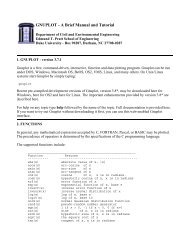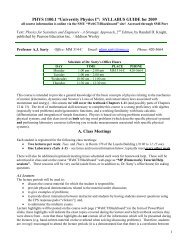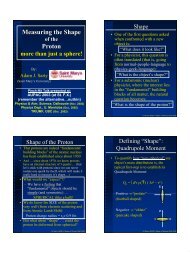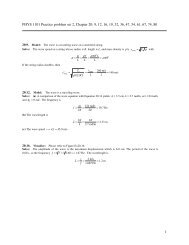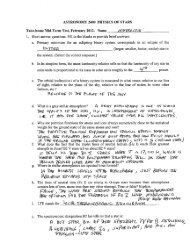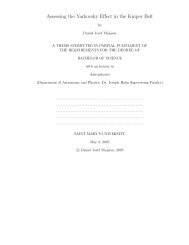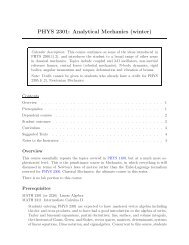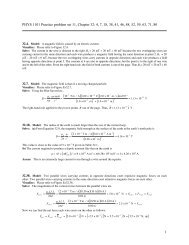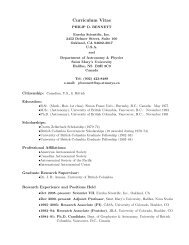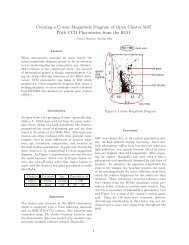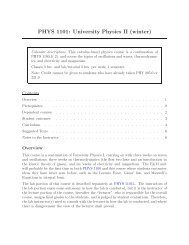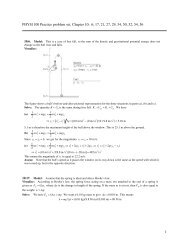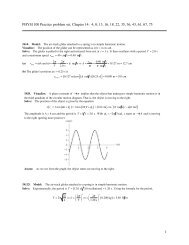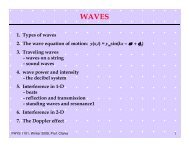Position Space Interpretation for Generalized Parton Distributions
Position Space Interpretation for Generalized Parton Distributions
Position Space Interpretation for Generalized Parton Distributions
You also want an ePaper? Increase the reach of your titles
YUMPU automatically turns print PDFs into web optimized ePapers that Google loves.
Discussion: GPD ↔ q(x,b ⊥ )<br />
b ⊥ distribution measured w.r.t. R CM<br />
⊥<br />
≡ ∑ i x ir i,⊥<br />
↩→ width of the b ⊥ distribution should go to zero as x → 1, since<br />
the active quark becomes the ⊥ center of momentum in that limit!<br />
↩→ H(x, 0, t) must become t-indep. as x → 1.<br />
Use intuition about nucleon structure in position space to make<br />
predictions <strong>for</strong> GPDs:<br />
large x (x ≫ m π<br />
M N<br />
): quarks from localized valence ‘core’,<br />
small x (x ∼ m π<br />
M N<br />
or less): contributions from larger ‘pion cloud’<br />
(C.Weiss et al.)<br />
↩→ size of hadrons in impact parameter space expected to increase<br />
as x decreases<br />
↩→ expect decrease of the t-dependence (⊥ size) in H(x, 0, t) as x<br />
increases (recently confirmed in LGT calcs. by J.W.Negele et al.)<br />
model: H q (x, 0, −∆ 2 ⊥ ) = q(x)e−a∆2 ⊥ (1−x)ln 1 x .<br />
<strong>Position</strong> <strong>Space</strong> <strong>Interpretation</strong> <strong>for</strong> <strong>Generalized</strong> <strong>Parton</strong> <strong>Distributions</strong> – p.17/55



